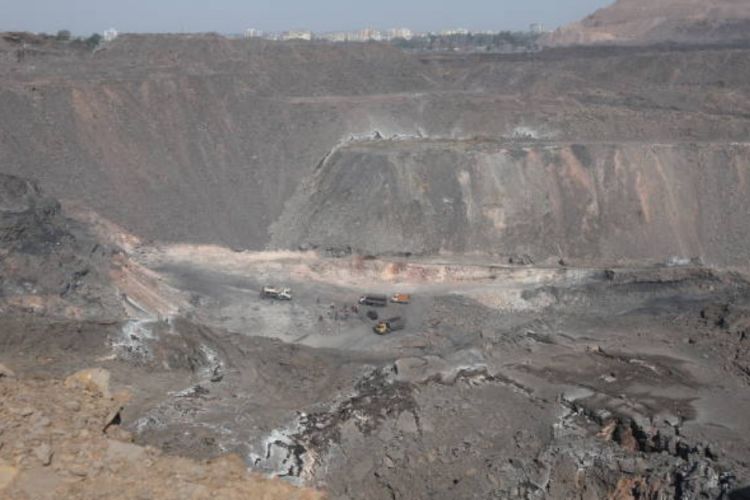
The Indian mining industry plays a crucial role in the country’s economic growth, providing essential raw materials for industries like steel, power, cement, and infrastructure. In this industry, contract mining or the mine developer cum operator model has emerged as an effective solution, allowing private participation in mining projects while ensuring efficiency and cost-effectiveness.
The evolution of contract mining in India today evokes a simple yet powerful parable. In a village plagued by drought, the people sought divine intervention and gathered for a collective prayer on a hilltop. Yet, of all the villagers, only three arrived carrying umbrellas — because they truly believed the rain would come.
READ | India-Japan joint crediting mechanism to strengthen climate partnership
This story, while modest in its telling, reflects a deep truth about India’s mining sector – progress requires not just effort, but conviction. And in the case of contract mining, conviction must be matched with collaboration, reform, and long-term thinking.
Contract mining explained
Contract mining or the MDO model is not a new concept in India. It existed well before the 2015 reforms that introduced auction-based allocation of mining leases. However, the sector underwent a fundamental transformation after 2020, when high bid premiums, increasing equipment and labour costs, and complex regulatory requirements reshaped the economics of mining operations. The MDO model was popularised and adopted primarily for a more capital efficient way forward to improve production.
The financial pressure on leaseholders in this present day has grown significantly in the capital-intensive mining industry. For instance, the cost of a Poweroc D65 drill machine rose from Rs 5 crore in 2020 to Rs 7 crore in just a few years. Similarly, labour costs in states like Odisha surged, with wages for unskilled workers increasing from Rs 298 to Rs 452 between 2020 and 2024, as did for semi-skilled and skilled respectively. The rising costs have pushed leaseholders to rely more heavily on MDOs — not just for technical execution, but increasingly as partners who can help share operational burdens.
While the contract mining model offers flexibility and scalability, its current implementation leaves much to be desired. The contractual arrangements often place MDOs at a disadvantage. Leaseholders must pay premiums upfront to enable ore dispatch and ensure timely wage payments to workers to avoid strikes. However, MDOs, who carry out the bulk of operations, are typically the last to be paid. This delay in payments creates acute working capital challenges, particularly for small and mid-sized MDOs with limited liquidity. While large MDOs with deep pockets can weather these delays, smaller players face existential risks. This inequitable distribution of financial burden, if left unaddressed, threatens to undermine the entire contract mining ecosystem.
Short-term contracts, long-term consequences
Another structural weakness lies in the short tenure of most MDO contracts, often limited to five years. This short horizon discourages skilled professionals from building long-term careers in mining. In earlier decades, mining companies offered township-based employment, complete with housing, education, and social infrastructure. Today, with contract tenures uncertain and benefits fragmented, young professionals increasingly migrate to sectors like IT, where long-term stability appears more assured. This talent drain, if not reversed, could create a leadership vacuum in India’s mining sector in the years to come. Short-term cost-cutting may overshadow long-term sustainable operations.
If India hopes to build a resilient and competitive mining sector, it must begin by treating MDOs as strategic partners rather than transactional vendors. These contractors are already sharing significant financial and operational risks; they deserve to be integrated more equitably into the value chain. This includes fairer payment terms, joint management of human resources, and mutual accountability for performance.
Additionally, the complex process of securing exemptions from Section 10 of the Contract Labour (Regulation and Abolition) Act, 1970 can be made easier for the employment of contract labour in mining operations. A coordinated effort by policymakers, leaseholders, and industry bodies is needed to simplify compliance and remove administrative roadblocks.
Operational flexibility and governance
Mining operations, by nature, are dynamic and subject to disruptions, whether due to regulatory changes, logistical issues, or unforeseen environmental factors. Yet most contracts lack built-in flexibility to adapt to such changes. When planned transport routes are altered or blocked due to government directives, MDOs are often forced to bear the cost, with delay due to systemic issues for renegotiation.
To address this, periodic reviews, joint problem-solving mechanisms, and flexible contractual terms must become standard practice. These changes would allow both leaseholders and MDOs to respond effectively to evolving ground realities.
Initially, there was scepticism around the capabilities of Indian MDOs, with many stakeholders preferring international firms known for their technological expertise. But over the past few years, domestic MDOs have proven their mettle. Many have adopted electric vehicles, integrated solar power, and moved toward establishing net-zero mining operations.
Mining operations pose several inherent, operational, and occupational hazards and associated risks to the work persons. According to data from DGMS, there have been 220 fatalities in Coal mining and 205 fatalities in Metal mining in India between 2020 to 2024. To improve the operational and health safety of workers, the leaseholder and MDO must come together to control hazards, prevent accidents, and protect workers and the environment throughout the mining process. Both must also conduct periodic reviews together with an aim to achieve “Zero Harm Potential (ZHP).
A call for reforms
The growing innovation and environmental consciousness among Indian players dispel the earlier belief that excellence lies solely with global operators. India’s MDOs are not just catching up—they are increasingly setting new benchmarks.
The Bhagavad Gita offers a guiding principle: “step by step, with determination and wisdom, progress is made.” The same principle applies to reforming India’s contract mining sector.
The Mine Developer Cum Operator (MDO) model is the future of the mining industry in India. The Indian Mining Industry must move forward with a clear vision and strong resolve. This includes treating MDOs as genuine partners, ensuring fair financial practices, addressing talent retention challenges, prioritising safety, and creating flexible, future-ready contracts. The industry must also foster multi-stakeholder dialogues to align the interests of communities, governments, and MDOs.
Like those three villagers with umbrellas, the mining sector must embrace conviction — not just in prayer, but in policy, practice, and partnership. Only then can contract mining evolve from a transactional model into a robust, inclusive, and sustainable pillar of India’s resource economy.
The author is Executive Incharge, Ferro Alloys and Minerals Division, Tata Steel Ltd. The views expressed in this article are of the author and not necessarily those of the company he is associated with.

